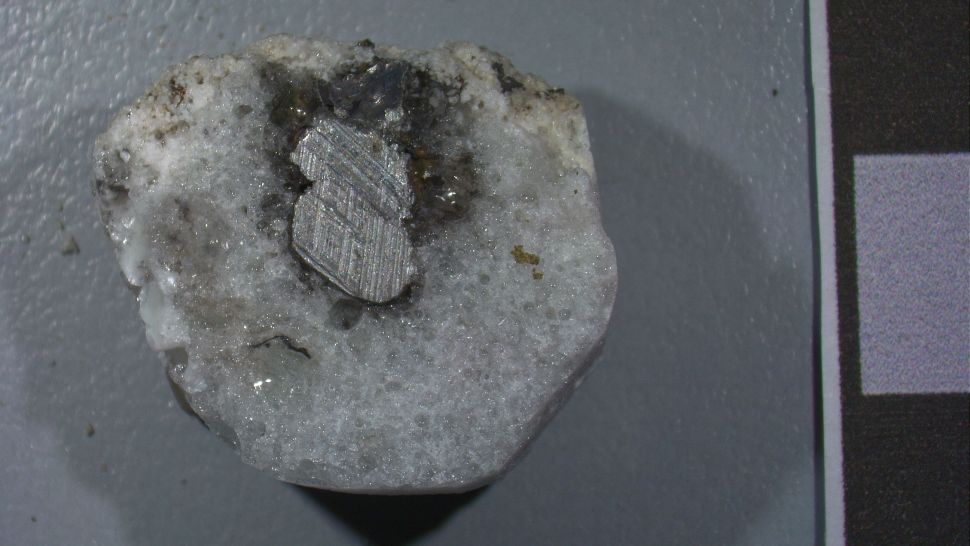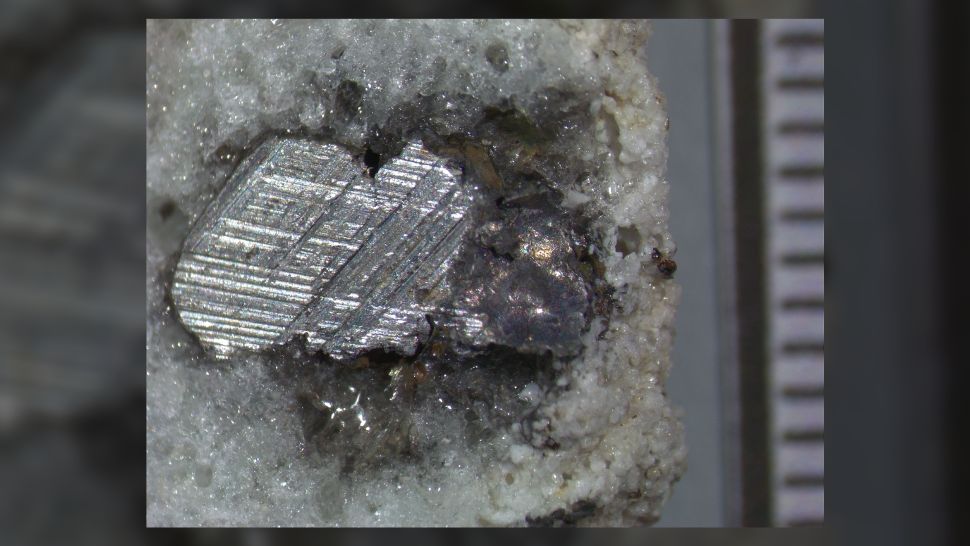Uncommon, ‘rule-breaking’ quasicrystal present in chunk of ‘fossilized’ lightning

A tube of “fossilized lightning” from Nebraska’s Sandhills holds a uncommon kind of quasicrystal that had beforehand solely been present in meteorites and at atomic bomb take a look at websites.
Quasicrystals are supplies that break the standard guidelines of crystallography. Earlier than they had been first reported in 1984, scientists thought supplies might both be crystalline — with symmetrical, repeating patterns — or amorphous, which means randomly organized and disordered. As well as, scientists believed crystals might solely be symmetrical a restricted variety of instances when rotated round an axis — two, three, 4 or six instances.
Quasicrystals break these guidelines. They’re put collectively in an ordered sample, however that sample does repeat. In addition they have rotational symmetries that no abnormal crystal can obtain. A quasicrystal with icosahedral symmetry, for instance, can show five-fold symmetry round six completely different traces of rotation.
Associated: Purple lightning: The electrifying climate phenomenon defined
Quasicrystals had been first found within the laboratory. In 2012, nonetheless, Paul Steinhardt (opens in new tab), a theoretical physicist at Princeton College, and Luca Bindi (opens in new tab), a geoscientist on the College of Florence in Italy, introduced the invention (opens in new tab) of a pure quasicrystal in a meteorite that fell on the Kamchatka Peninsula in northeastern Russia. The researchers then created extra quasicrystals within the lab by mimicking the excessive temperatures and excessive pressures that is perhaps discovered when rocky our bodies collide. They then turned to a different place the place a really fast transition to excessive temperature and excessive strain occurred: the Trinity atomic bomb take a look at website in New Mexico. There, they discovered extra quasicrystals in minerals from beneath the place the atomic bomb exploded.
“Because of this, I began to think about different supplies shaped in related situations. And I considered fulgurites, supplies shaped by lightning strikes,” Bindi instructed our sister web site Reside Science in an e mail.

(opens in new tab)
Dramatic discharge
Fulgurites kind when lightning hits sand, fusing collectively the grains in a gnarly, branching tube of glass. Bindi collected a number of fulgurites in his seek for quasicrystals. The one which held this uncommon type of matter got here from the Sandhills of Nebraska, close to the village of Hyannis. This space of Nebraska is made up of grass-covered sand dunes.
The fulgurite was discovered close to an influence line that went down in a storm in 2008. In complete, it was about 6.6 ft (2 meters) lengthy and as much as 3.1 inches (8 centimeters) in diameter. Nobody witnessed the occasion, so the researchers aren’t certain whether or not lightning struck the facility line and created the fulgurite, or whether or not the road went down within the wind and created the fulgurite with its personal electrical discharge.

(opens in new tab)
Both approach, the ensuing branched glass contained a combination of supplies from the sand and the metals within the electrical line, together with manganese, silicon, chromium, aluminum and nickel. To meld these supplies, the temperature of the sand will need to have briefly reached at the least 3,110 levels Fahrenheit (1,710 levels Celsius), the researchers reported Dec. 27 within the journal Proceedings of the Nationwide Academy of Sciences (opens in new tab).
Trying to find quasicrystals
Utilizing a scanning electron microscope, Bindi, Steinhardt and their colleagues discovered a 12-sided, 12-angled crystal with 12-fold symmetry embedded within the fulgurite. Quasicrystals with this type of symmetry are even rarer than quasicrystals basically, the researchers wrote of their paper; quasicrystals with 10-fold symmetry or icosahedral symmetry are extra widespread.
The invention factors to new locations to search for pure quasicrystals, Bindi mentioned.
“It demonstrates that transient excessive pressure-temperature situations are appropriate for the synthesis of quasicrystals,” he mentioned. Different potential locations to seek out quasicrystals, he mentioned, is perhaps in influence glasses shaped when massive meteorites or asteroids hit Earth, or in elements of the moon’s floor which were hit by asteroids.
Source link





